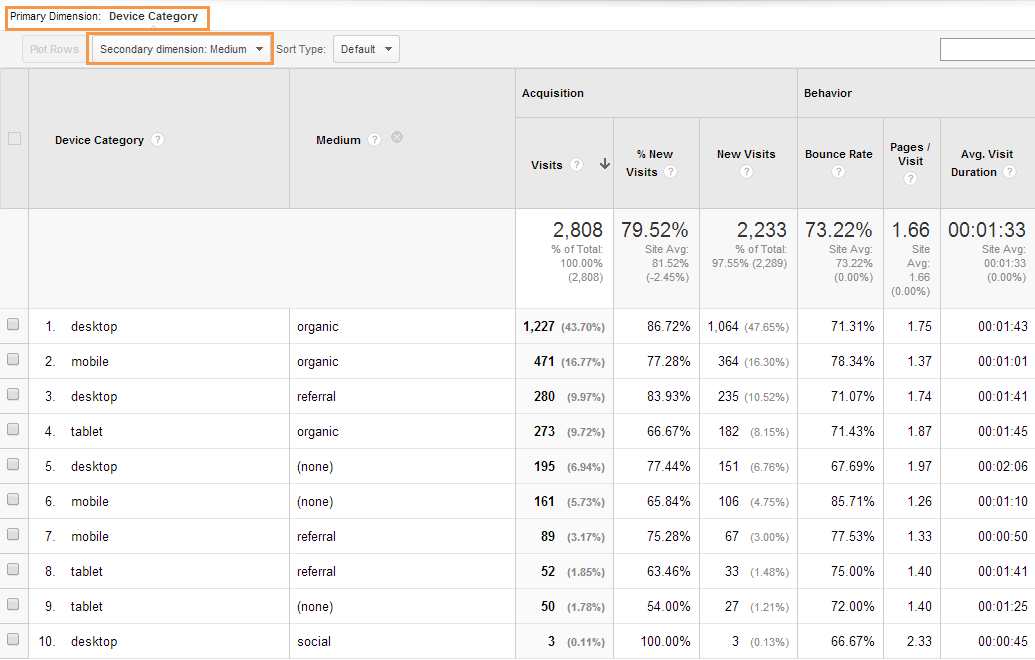Mastering Google Analytics: Harnessing Secondary Dimension for Deeper Analysis
Mastering Google Analytics: Harnessing Secondary Dimension for Deeper Analysis
Blog Article
Opening the Power of Secondary Dimension Analytics for Enhanced Information Insights and Decision-Making
In the world of data analytics, main measurements usually take the spotlight, however truth deepness of insights exists within the realm of additional measurements. These added information points supply a nuanced viewpoint that can light up relationships and patterns not readily apparent at very first glance. By harnessing the power of secondary measurement analytics, organizations can introduce concealed fads, uncover connections, and extract more purposeful conclusions from their data. The possibility for boosted decision-making via the usage of these additional dimensions is large, promising a much deeper understanding of complicated information collections and leading the means for even more enlightened strategic selections.
Value of Secondary Dimensions
Checking out the significance of secondary dimensions in analytics reveals the covert layers of data insights vital for informed decision-making in numerous domains. Second measurements offer a much deeper understanding of key data by supplying additional context and viewpoints. By incorporating second dimensions right into analytics, companies can remove extra nuanced and comprehensive insights from their datasets.
One key value of second measurements is their capability to section and categorize key data, enabling a much more detailed evaluation of certain subsets within a dataset. This segmentation allows companies to determine patterns, trends, and outliers that may not be apparent when taking a look at the information overall. Moreover, secondary measurements aid in revealing relationships and dependences in between various variables, causing more accurate forecasting and predictive modeling.
Moreover, secondary measurements play an essential function in improving data visualization and coverage. By adding additional measurements to visualizations, such as graphs or charts, experts can produce more insightful and insightful representations of information, helping with better interaction of searchings for to stakeholders. Generally, the integration of second dimensions in analytics is instrumental in unlocking the complete capacity of data and driving evidence-based decision-making.
Key Advantages of Utilizing Additional Measurements
Making use of second measurements in analytics provides organizations a tactical advantage by boosting the deepness and granularity of data insights. One crucial benefit of including second dimensions is the ability to section and filter information, enabling an extra thorough evaluation of specific elements within a dataset. This division allows companies to gain a much more nuanced understanding of their audience, efficiency metrics, and various other critical data points. By dissecting information utilizing additional dimensions such as time, location, gadget type, or customer demographics, organizations can reveal patterns, fads, and correlations that might or else continue to be covert.
Additionally, the usage of additional measurements enhances the context in which main information is analyzed. By leveraging additional dimensions in analytics, organizations can harness the full potential of their information to drive far better decision-making and Web Site accomplish their business goals.
Advanced Information Analysis Strategies
A deep dive into innovative information analysis methods discloses sophisticated methods for drawing out useful insights from complex datasets. One such method is artificial intelligence, where algorithms are utilized to recognize patterns within information, predict outcomes, and make data-driven decisions. This technique enables the automation of logical model building, making it possible for the handling of big volumes of data at a much faster pace than conventional techniques.
An additional innovative technique is anticipating analytics, which utilizes statistical formulas and artificial intelligence methods to anticipate future outcomes based on historic data. By analyzing fads and patterns, services can expect customer actions, market patterns, and possible risks, equipping them to make positive decisions.
Furthermore, message mining and sentiment evaluation are beneficial techniques for drawing out insights from unstructured information sources such as social networks comments, customer evaluations, and survey feedbacks. By examining text data, organizations can comprehend consumer opinions, determine arising fads, and enhance their service or products based on comments.
Enhancing Decision-Making With Second Measurements

Enhancing decision-making through second dimensions makes it possible for services to make more notified and targeted strategic options. For instance, by segmenting customer data based upon second dimensions like buying background or engagement levels, business can customize their advertising and marketing approaches to certain audience sectors, leading check these guys out to boosted conversion prices and client contentment. Additional measurements can help recognize correlations and connections in between various variables, making it possible for companies to make data-driven choices that drive growth and success.
Applying Secondary Dimension Analytics
When incorporating secondary measurements in analytics, companies can unlock much deeper understandings that drive tactical decision-making and enhance overall performance. This requires recognizing the specific concerns the organization looks for to respond to and the information points needed to resolve them.

Additionally, companies need to utilize progressed analytics devices and innovations to streamline the procedure of incorporating second go to this site dimensions. These devices can automate data handling, analysis, and visualization, allowing organizations to concentrate on interpreting understandings instead of hand-operated data control.
Conclusion
In verdict, second measurement analytics play a crucial duty in boosting information insights and decision-making processes. By using innovative information evaluation techniques and implementing secondary dimensions successfully, companies can unlock the power of their information to drive critical business decisions.
In the realm of information analytics, main measurements frequently take the spotlight, however the true depth of understandings lies within the realm of additional dimensions.Utilizing additional measurements in analytics uses companies a strategic advantage by boosting the depth and granularity of data insights. By leveraging secondary measurements in analytics, companies can harness the complete possibility of their data to drive far better decision-making and accomplish their business goals.
Carrying out data validation procedures and routine audits can assist maintain data high quality and dependability.
By making use of sophisticated information evaluation methods and applying additional dimensions properly, companies can unlock the power of their information to drive strategic business decisions.
Report this page